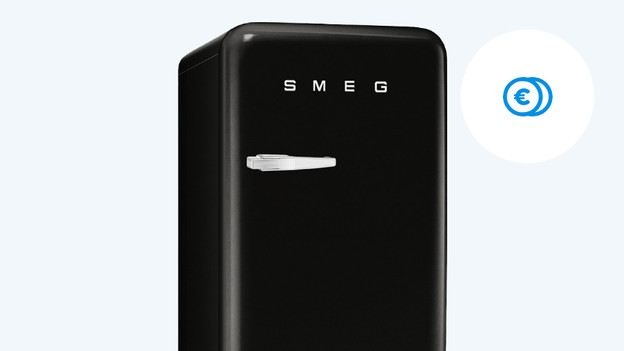
Written by Caitlin
Edited on
14 October 2025
·
11:15
Compact fridge: how much does a C energy label save compared to F?
When you're looking for a new fridge, a C compact fridge may seem more expensive than an F model. But with a C energy label, you spend less on energy costs thanks to the low energy consumption. This way, you save € 130 on energy costs during the lifespan of the appliance. In addition, you save the CO2 emission of a flight to Crete.
Good for the environment

C saves the CO2 emission of a 2360km flight
With an energy-efficient compact fridge, you can save an amount of CO2 emissions similar to the emissions of a 2360km flight. To give you a better idea of this comparison, that's the distance between Schiphol and Crete in Greece in a straight line. That means a C compact fridge saves as much emission as a one-way trip to a reasonably far-away vacation destination. How many CO2 is that exactly? That's 514.56kg.

F needs 26 trees to grow for 1 year
The amount of emissions you save with a C compact fridge is emitted by the less energy-efficient F model. Trees absorb these CO2 emissions. To absorb the full 514.56kg of CO2, 26 trees must grow for 1 year. This comparison only applies to gray energy. Do you have green energy? You don't have to worry, because green energy doesn't leave a CO2 footprint.
Savings for you

C saves € 120
When you buy a C compact fridge, you save € 130. This may sound strange, because the average purchase price is higher than that of an F model. But per year, you'll save € 19 on energy costs. After a little over 9 years, you've earned back the difference in purchase price. The fridge lasts 15 years on average, so you'll save € 130 over the next 6 years.

F costs € 120 more
An F compact fridge seems more affordable when you purchase it. That's because the average retail price is about € 181 cheaper. But it'll cost you more in the end, because you'll spend more on energy costs each year. Per year, it'll cost you € 19 more compared to an energy-efficient model. And when it's time for a new fridge after 15 years, you'll have spent € 130 more.
Cost comparison
| C | F | |
|---|---|---|
| Average consumption per year | 72kWh | 136kWh |
| Annual energy costs (€ 0.30) | € 22 | € 41 |
| Average purchase price | € 580 | € 399 |
| Total costs after 15 years (purchase price + energy costs) | € 910 | € 1040 |
Article by Caitlin
Fridge Expert.
